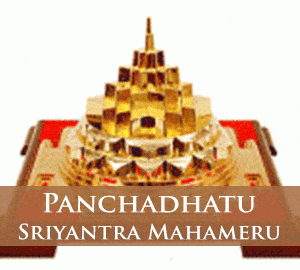14. The effects of various Bbavas and planets in a birth chart can be assessed properly only after working out (the longitudes) of the Lagos, other Bhavas and their Sandhis, and of the planets. The true positions (longitudes) of the planets can be easily calculated with the help of an almanac of the concerned period.
15-16. The Isht-kala of the planets as of own in the almanac is known as Mishra-mana. If the Mjshra-mana (week day, ghaties, pala) is in advance of th e Ishtakala of birth (week day, ghaties, pala), then such week day ghaties, pala, may be deducted from the former. The remainder would be subtractive. If the Ishtkala, of birth is in advance of the Mishramana, its week day, ghaties, pala etc. may be deducted from the week day, ghaties etc. of the former. The remainder would be additive.
The remainder in days, ghaties etc. may be reduced to palas and multiplied by the rate (in minutes) of the motion given for the planets in question and divided by 3600. The quotient would be additive in case the planetary position relates to a period prior to the required time, and subtractive when the said period is subsequent to the one under consideration.
17. If a planet is in retrograde motion the process outlined in the previous sloka should be reversed in order to work out its position. In the case of Mandi its position on the several week from Sunday will be worked out by a Process of subtraction of 4 ghaties from each day (and finding the Lagna at the time), thus Sunday 26, Monday 22, Tuesday 18 and so on.
18. Find out the sayan longitude of Sun as counted from the equinoctial point is Aries 0, by adding ayanamsa lo its nirayan longitude. Then note in which sign is it posited. Take the portion of that sign still to be traversed by Sun. Also find out thy time of traversing it. Subtract it from the time of epoch. Note the number of signs passed in full from sunrise till then by deducting one by one the time taken by different signs to rise above the horizon. [Here the author presupposes that the Astrologer has at hand the Table of Houses and the rising time of different Lagnas or Ascendants for that place and that day].
Ultimately the Astrologer arrives at a rough or (Ashuddha) sign which cannot be further subtrached. Note the remainder, Using the Law of Three, i.e multiplying this time by 30 palas and dividing by the rising period of that sign in palas, the Bhukha or the elasped portion of that sign can be ascertained in degrees and minutes. Add to this the preceding signs reckoned from the equinoctial point i.e., Aries 0 and subtract ayanamsa from the Sun. The remainder is the (nirayan) longitude of the Ascendant.
19. This sloka gives the process by which the lagna is to be calculated for birth at night. We first note the actual time that has elapsed since last sunrise. The Dinmana or the length of the day is then subtracted from the total time that has elapsed since the last sunrise. If we add six signs to the position of Sun at last sunrise, we will get the position of the Sun at the sunset before birth. This is to be shown in degrees etc. The interval the portion that has elapsed since sunset and the birth time in ghaties etc. should be converted into distance by a process similar to the one mentioned iv the previous sloka but in a reverse manner.
20. In order to find out the exact position of the 10th house (Dasham Lagna) it is necessary to explain what Nata is. It is to be calcuked after knowing the exact time of birth. According to some learneds Nata is of four varieties, while others say that there are two kinds of Nata and two kinds of Unnata.
21. According to astronomers Unnata is measured from the nadir while Nata from mid-heaven. They both represent the interval between the planet concerned (here in this case, the Sun) and the Meridian. The astronomers are also of the opinion that Unnata is also of four varieties.
22. According to the opinion of these if the birth takes place at night six signs are added to the Sayan Sun (sayan longitude). If the birth takes place at day, no such addition is called for. The Nata (which even of the four varieties it may happen to be) should be converted into degree, minutes etc., by the same process which is adopted for working out the Lagna, but with this difference that the rates of several rising periods should be those obtaining at the Equator, by the process of addition or substraction its the case may be in order to calculate the correct position (of the mid-point or mid-heaven. But Kesava and others have expressed the view that tlic 10th house should be calculated from the Nata.
23. According to one school of thought the longitude of the 10th hcuse should be calculated as follows: if it is day birth we should note where the longitude of the place cuts the zodiac into two visible halves of about three signs each, one in the East and other in the West, and this intersecting is the mid-point or the centre of the 10th house and may be calculated from the Nata or meridian distance of the Sun at the time – East or West. Acording to the other view the Sun has to be fixed in the other half of the zodiac by the addition of six more signs and the position of the Nadir (or the Bhava-madhya of the 4th house) should be calculated through the Nata (and Unnata) or meridian distance between this point and this new (imaginary) Sun.
24. There is yet another method of working out the Bhava Madhya of the 10th house. The time intervening between the exact position of the Sun at birth and mid night in ghaties should be noted. The mid night should be taken as Ishta kala and its exact position in ghaties should be converted into degrees at rates (of rising periods of the several Rasis) obtaining at the Equator the result with the exact position of the fourth house. By adding six signs to this we will get the position of the 10th house.
25. After having calculated the position of Lagna and the 10th house, we may proceed to find out the positions of the other Bhavas. If we add six signs to the longitude of the 10th house we will get the longitude of the 4th house. Similarly by adding six signs to the Lagna we will get the longitude of the 7th house. If we deduct the longitude of Lagna from that of the 4th house and divide it by 3, this 1/3 portion when added to the longitude of Lagna, will get us the longitude of the second house (or Bhava). In the same manner deduct the longitude of the 4th house from that of the 7th house and add 3rd of the difference to the longitude of the 4th house. The result will be the longitude of the 5th house











